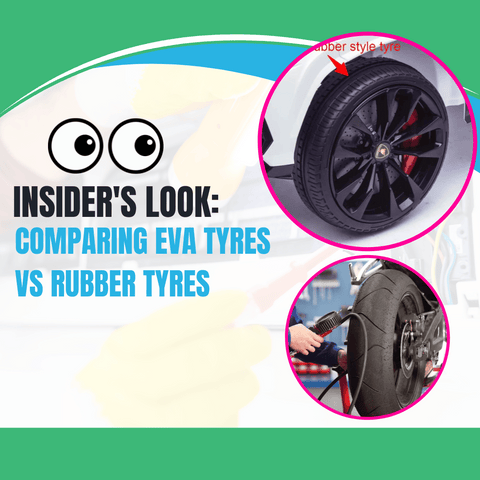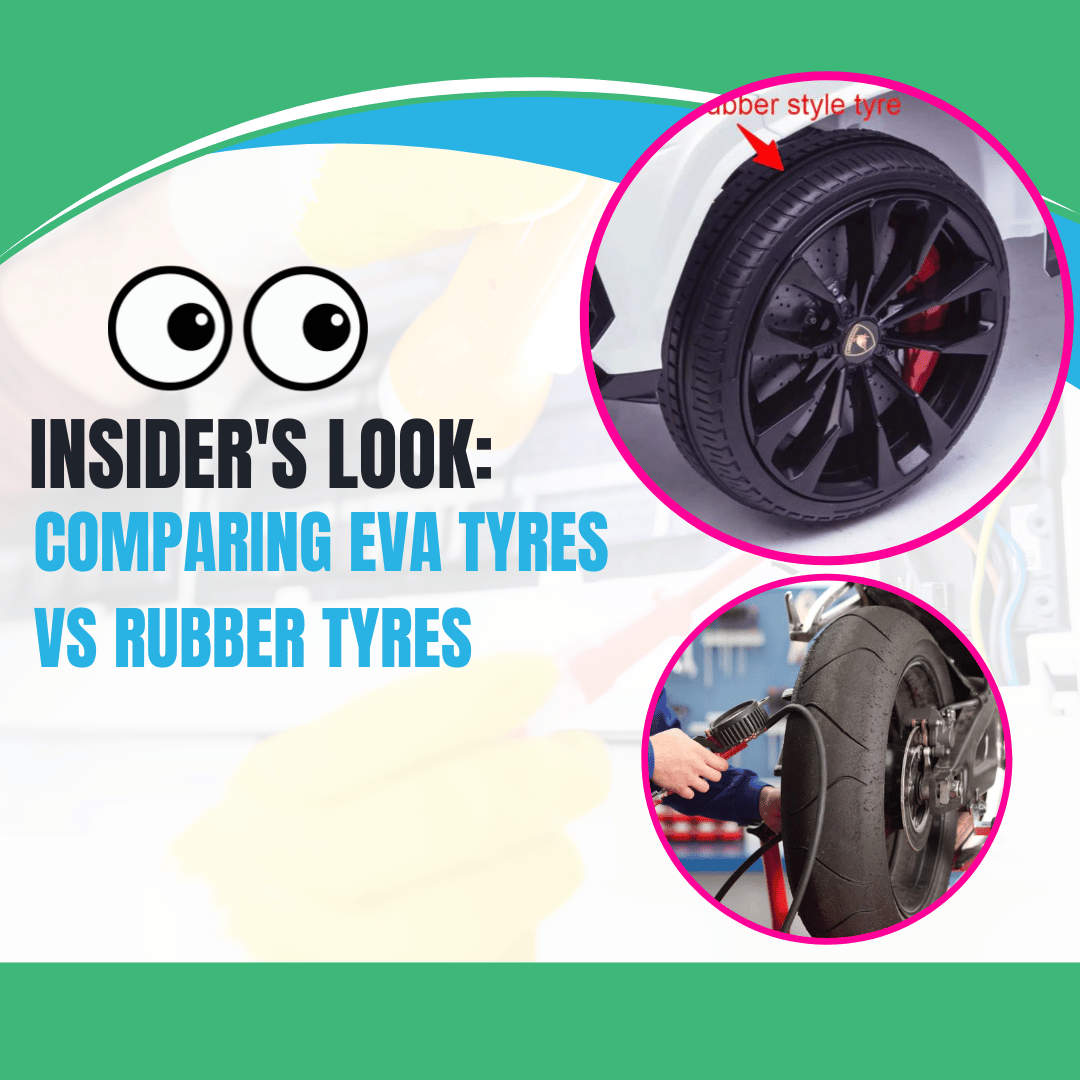Updated: 24.3.25
Struggling to choose between Eva tyres or rubber tyres for your child’s bike, scooter, or stroller?
You’re not alone—it’s a key decision for comfort and performance. 
What Are Eva Tyres?
Eva tyres are made from Ethylene-Vinyl Acetate (EVA), a lightweight, flexible plastic.
Common in kids’ ride-ons and strollers, they’re easy to manoeuvre due to their low weight.
While affordable and decent on smooth surfaces, Eva tyres are stiffer, offering less traction off-road.
What Are Rubber Tyres?
Rubber tyres, sourced from rubber tree sap, are soft, grippy, and durable.
They provide excellent traction and are ideal for outdoor play on various terrains.
Though heavier and pricier than Eva, their flexibility ensures a smoother, safer ride.
Eva Tyres vs Rubber Tyres: A Comparison
Weight & Terrain
Eva tyres are lighter, perfect for strollers and small toys on smooth surfaces.
Rubber tyres excel off-road with better grip and knobbiness.
Material & Cost
Eva tyres are plastic, making them cheaper and easier to produce.
Rubber tyres, being natural, are costlier but offer superior grip and durability.
Comfort & Traction
Eva's tyres work well on pavement but lack comfort in rough terrain.
Rubber tyres adapt to surfaces, ensuring a smoother, safer ride.
Durability & Price
Eva tyres are budget-friendly but wear out faster.
Rubber tyres last longer, making them a better long-term investment.
Environmental Impact
Eva tyres raise recycling concerns as plastic, while rubber tyre production is energy-intensive.
| Feature | Eva Tyres | Rubber Tyres |
|---|---|---|
| Weight | Light | Heavier |
| Traction | Lower (smooth terrain) | Higher (all terrains) |
| Cost | Cheaper | More expensive |
| Durability | Lower | Higher |
Exploring Slick Tyres
Slick tyres, with their tread-free design, maximize grip on dry, smooth surfaces like pavements.
They struggle on wet or off-road terrain due to poor water channelling.
Related: Do Slick Tyres Have More Grip?
Conclusion
Choose Eva tyres for lightweight, budget-friendly options on smooth urban surfaces.
Opt for rubber tyres if you need durability, traction, and comfort on varied terrains.
Related: RiiRoo's Top 4 Ride on Drift Cars
FAQ’s
Are Eva tyres good for all weather?
Eva tyres work in mild weather but struggle in wet or icy conditions due to lower traction.
How do Eva vs rubber tyres affect speed?
Eva tyres may boost speed on flat surfaces due to their lightness; rubber tyres offer better control on rough terrain.
Can I swap Eva tyres for rubber on a stroller?
Yes, if sizes match, but rubber tyres add weight and may affect manoeuvrability.
How do I maintain Eva or rubber tyres?
Inspect for wear, clean debris, and check rubber tyre pressure regularly to extend lifespan.
Ready to Ride? 🚀
Loved our 2025 guide on Eva vs rubber tyres?
Explore more at RiiRoo.com or chat live with us!






Share:
Do Slick Tyres Have More Grip? Exploring Performance and Safety
The Ultimate Resource on Go Kart Tyres: Everything You Need to Know